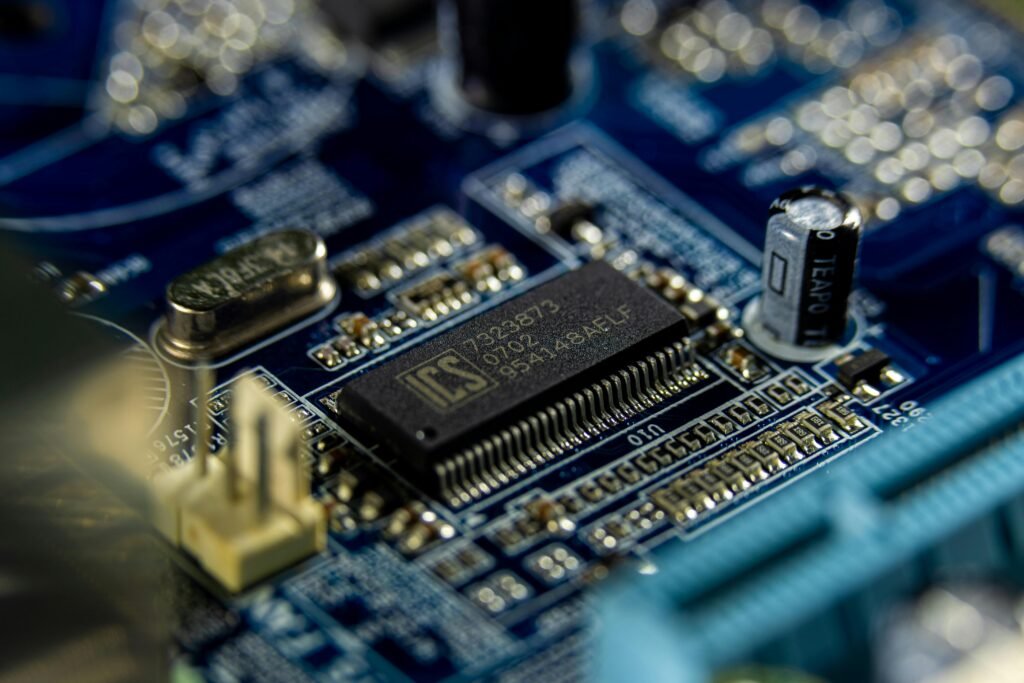In today’s environment of rapidly growing technological advances and increasing market demands, companies have no other option but to evolve. The change in the electronic spare parts industry can be understood that earlier, it had limited access and was dependent mostly on physical stores. Currently, e-commerce has affected all aspects of trading spare parts through efficiency and convenience. It is changing the very essence of how businesses perform in the spare parts industry while simultaneously making this sector more open, practical and customer-oriented.
This blog specifically discusses how e-commerce is transforming the electronic spare parts industry and explores key trends that are currently dominating the industry, as well as the many benefits businesses and consumers are enjoying. As a result, it will be possible to conclude that e-commerce is not hype but an evolution that will affect the field in the future.

Key Trends Driving the Shift
Advancements in e-commerce in the electronic spare parts industry have been fueled by the following trends that are revolutionising the way the parts are sold and bought. These trends incorporate state-of-the-art techniques that increase customer satisfaction, optimise the supply chain, and accelerate the organisational adoption of online channels for buying and selling.
Digital Platforms and Marketplaces
The concept of the selling of spare parts has been greatly enhanced by the introduction of online markets. Well-known e-business companies such as Amazon, eBay, and Alibaba are well-known for the procurement of electronic parts. The platforms present a broad range of products – basic supplies like batteries and chargers, as well as spare parts for specialised gadgets. Customers can easily identify the needed parts. Thus, they also have an opportunity to read other customers’ opinions and view their ratings of specific parts.
However, other than these general business-to-business platforms, there has been the appearance of business-to-business electronic spare parts e-commerce platforms that are more specific. These niche sites are targeted towards technicians, repairmen, and enthusiasts, with a relevant and tailored list of parts and equipment. For instance, iFixit is involved in repair guides and the distribution of spare parts to enable a person to repair gadgets on his or her own.
AI and Machine Learning in Search and Recommendations
Another major development in e-commerce is the application of artificial intelligence and machine learning to enhance the search and recommendation functions. These technologies are crucial in delivering the right experience that consumers need without having to wade through numerous pages of products.
Using artificial intelligence, it is possible to achieve a better focus on the material the user is looking for by presenting portions of the text that will be most useful to him. For instance, if a customer is interested in buying a screen for an Asus Zenfone 5 A501CG smartphone, then the platform will direct the buyer to other similar screens of different models as well. Moreover, it is also capable of suggesting to the consumer related parts or accessories that he may require for his vehicle,e thereby supplementing the buying decision process.
It is also making it possible for e-commerce sites to offer a more tailored service. By analysing the browsing history and purchase history of users, AI systems can suggest products that are likely to be of interest to the consumer, which makes the search easier for the user. Such a refined approach not only improves levels of satisfaction among the clients but also impacts sales and creates traffic for the business.
Integration of Augmented Reality (AR)
Augmented reality (AR) has already found many applications in e-commerce, mainly within electronics industries. AR technology is gradually being implemented in applications that showcase some of the online stores that deal in electronic spare parts, creating the experience through visual interfaces by which customers can engage the products before purchasing them.
Some e-commerce sites are using AR software that lets the users know how a spare part will fit into their device or how it will interface with other parts. This is also translated to the ability of the customers using a smartphone or tablet to get an eye view of the part they intend to order, thus reducing the chances of making a wrong order for a wrong part. This feature is particularly advantageous for both regular buyers, who may not always look at the particular parameters necessary for interaction with the device, and for regular sellers.
Sustainability and Circular Economy
Consumers’ awareness of sustainability is rising steadily, and e-commerce giants are working toward responding to this issue adequately. This change is even more apparent in the electronic spare parts market,t where remanufactured, recycled or refurbished components are fast becoming the order of the day.
Advanced and modified parts, conveniently termed refurbished parts, have become the new trend among consumers as they spare the environment from more e-waste, as well as the manufacturers from the pressure of sourcing raw materials. To leverage this opportunity, e-commerce platforms have been providing a myriad of sustainable products that enable consumers who wish to embrace a circular economy. Consumers are willing to incur less cost when they buy used or recycled products and hence benefit from saving regarding the costs of new parts.
Despite the risk of impacting their sales, this is a stab at being environmentally responsible, which is seeing less electronic waste and more focus on repairing than replacing in this world we live in now. Increasing numbers of e-commerce companies that are part of this market are sharing extensive data ontheirs ecological footprint, enabling buyers to make conscious choices.
Subscription and On-Demand Models
It has also affected the selling of electronic spare parts for a variety of consumer products through subscription services and on-demand models. Numerous strategies are implemented on e-commerce platforms: products that are used up and need to be replenished are available in categories with a subscription system, allowing customers to receive the part periodically. This saves time that consumers used to spend ordering different parts and also makes sure that they always have enough of just the parts they require.
Other related models, such as the on-demand model, which requires manufacturing parts as and when they are required, have also been embraced. These models enable the consumers to make orders for some spare parts that may be difficult to obtain in the current market. The use of technology like 3D printing can help companies develop specialised parts or parts hard to acquire on shelves, supplying them directly to clients and minimising demands for physical stock.

Benefits of E-Commerce for the Electronic Spare Parts Industry
E-commerce has not only impacted how spare parts are sold and bought, but it has also introduced numerous advantages for producers and consumers alike. These advantages are adding to the development and further progression of the industry, and they reveal the opportunities that are exclusive to online markets.
For Consumers:
Ease of Access: The main benefit that can be highlighted for consumers is the convenient access to a wide range of spare parts regardless of the area. This means that customers will, in any case,e be able to obtain a very large number of parts without being influenced by geographical factors such as being in a rural or densely populated area. This has boosted the availability of general and special part types, thus guaranteeing that the customer gets whatever he wants whenever he wants it.
Enhanced Knowledge: This way, e-commerce presents several product descriptions, guidelines, instructions, reviews, and descriptions of technical peculiarities facilitating the consumer’s decision. This access to information aids the users, particularly the non-technical user when selecting the right part to fit their gadgets. Furthermore, ratings accumulated by the customers are informative of the quality and durability of the parts as well.
Cost-Effectiveness: Many of the parts are sold through online stores, and these are cheaper as they come with different specials, coupons and promotions. E-commerce strategy eliminates most of the intermediary processes and has less overhead compared to other business models that are available for businesses, distributors and end users, which ultimately leads to lower prices due to e-commerce strategy. This is especially so if the consumer requires replacement of the parts often; they can easily buy the parts online.
Time Efficiency: One of the benefits of e-commerce is that it does not take long to receive a product, as there are options such as same-day delivery and next-day delivery in many locations. It becomes even more important to those people who require particular parts for their devices, especially for repairs and servicing. Another advantage of e-commerce is the opportunity to monitor orders and control delivery dates.
For Businesses:
Expanded Reach: E-commerce extends markets for businesses beyond local or even regional areas, provided that the customers are worldwide. For instance, by adopting an internet presence, organisations can make sales across borders with customers who are perhaps unable to reach them.
Data Insights: Among the most significant benefits of e-commerce platforms for business, one of the most important is that e-commerce boasts an incredible amount of data. The organisations can observe the actions of the customers, find out what products are popular, and get more information about the buyers. This information provides businesses with an opportunity to refine their services and products and meet customer needs.
Operational Efficiency: E-commerce automates many of the business processes, hence minimising a large number of tasks such as ordering, stocking and delivery. This cuts down the intervention of people in the process and allows organisations to bring their products to the market faster and with precision.
Cost Savings: The opportunity to sell spare parts on the Internet can be beneficial for companies because it would cut expenses related to operating real shops and offices. However, direct marketing, Website optimisation and other forms of internet advertisements like SEO, content marketing, and ads are cheaper methods of reaching the target market and making sales.
Conclusion
Consumers are sure to reap the benefits of this by having increased product choice and improving prices, while businesses will enjoy better selection, improved prices and convenience. Such factors as technological developments, environmental concerns, and the upward trend of efficiency have firmly placed the sales of spare part products online. This shift is not a temporary phenomenon but can be seen as the future of the industry that is free from technical and time constraints and adapts the customer needs to the spare parts buying and selling process.
